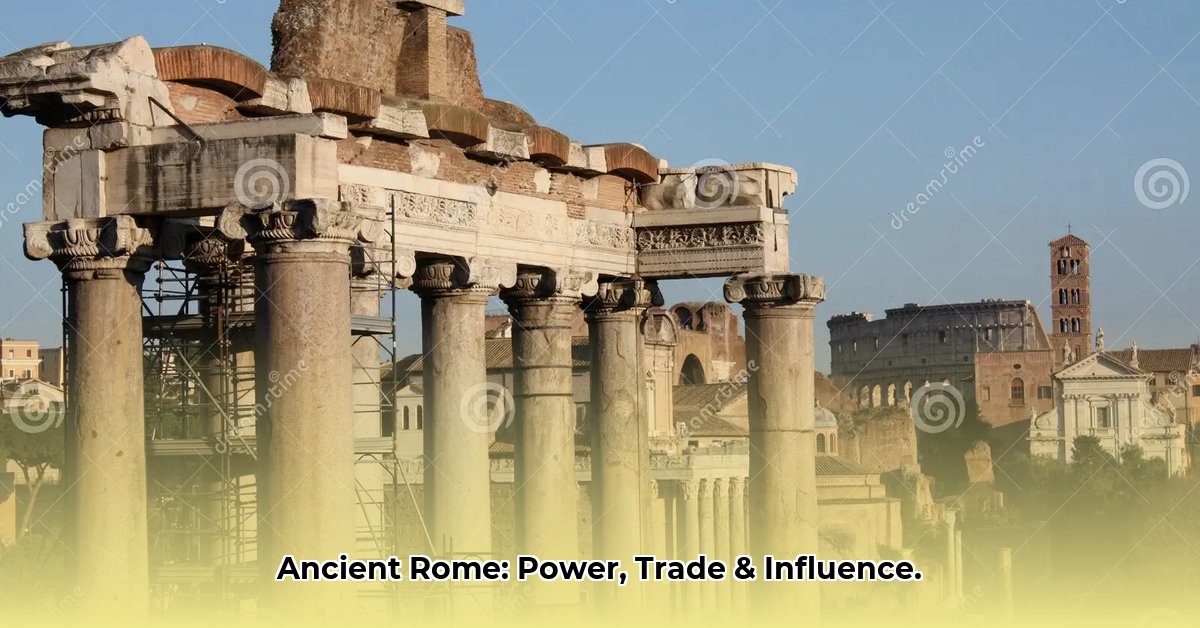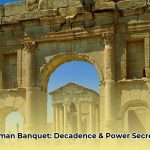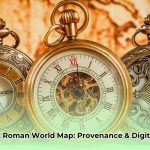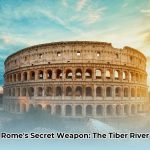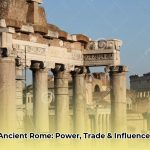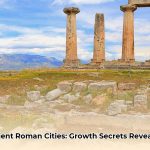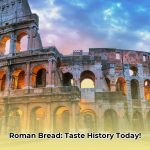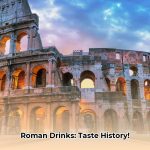Have you ever pondered what truly propelled the Roman Empire to its zenith? Beyond its formidable legions, sophisticated legal codes, and pioneering infrastructure, the very heartbeat of Roman power resonated within its vast, meticulously planned network of ancient Roman cities. These were far more than mere population centers; they were vibrant epicenters of political authority, bustling marketplaces, and dynamic melting pots where diverse cultures converged and thrived. Yet, beyond the colossal grandeur of Rome itself, what made strategic locations like Alexandria, Carthage, and Constantinople so utterly indispensable, and what invaluable lessons can we still glean from their profound histories today?
Explore further what made these ancient Roman cities so strategically important. Join us on an immersive journey through these ancient metropolises as we uncover their secrets of strategic power, intricate trade networks, and the potent cultural sparks that continue to illuminate our contemporary world. From the grand capital, Rome, to Alexandria, a nexus for brilliant thinkers; Carthage, a phoenix-like trade hub; Constantinople, the vital bridge between East and West; and Antioch, a pivotal stop on the fabled Silk Road – each city offers unique insights into the enduring legacy of urban development, resilience, and global interconnection.
Blueprint of Empire: The Shared Foundations of Roman Cities
Before delving into individual urban marvels, it’s crucial to understand the foundational principles that underpinned Roman city planning across the vast empire. The Romans were meticulous urban architects, and their cities shared key characteristics that fostered efficiency, order, and Roman identity:
- Orderly Grid Layouts: Most Roman cities, especially new foundations or rebuilt ones, adhered to a strict grid pattern. Two main streets, the cardo (north-south axis) and the decumanus (east-west axis), intersected at the heart of the city, forming its central organizational framework. This systematic approach facilitated easy navigation and efficient resource allocation.
- The Forum: Heart of Public Life: At the intersection of the cardo and decumanus lay the forum, the central public space. This vibrant hub served as a marketplace, a center for political discourse, religious ceremonies, and legal proceedings. Flanked by temples, basilicas (law courts and administrative buildings), and government offices, the forum was where the pulse of Roman civic life truly beat.
- Aquaducts: Engineering Masterpieces: Roman cities boasted impressive aqueduct systems, gravity-fed channels that transported fresh water from distant sources into the urban centers. This engineering marvel ensured a constant supply of water for public baths, fountains, private homes, and sanitation, underscoring the Roman commitment to public health and urban comfort.
- Public Baths and Entertainment Venues: Beyond hygiene, Roman public baths were crucial social and recreational centers, often incorporating gymnasiums, libraries, and gardens. Amphitheaters (like the Colosseum) and theaters offered public spectacles, gladiatorial combats, and dramatic performances, serving as vital outlets for Roman culture and entertainment.
- Robust Infrastructure: Roman roads, famed for their durability, connected cities across the empire, facilitating rapid communication, military movements, and trade. Advanced sewer systems and public latrines further demonstrated Roman ingenuity in urban sanitation. City walls and gates provided defense and controlled access, particularly for towns situated near the empire’s frontiers.
These common features highlight the Roman genius for urban organization, an approach that profoundly influenced the development of cities in Europe and beyond, a legacy still discernible in many modern metropolises.
Rome: The Eternal Wellspring of Power
Naturally, our profound exploration must commence with Rome, the revered Eternal City. As the undisputed capital for centuries, Rome was the pulsating core where monumental decisions were forged, religious authority held unwavering sway, and every grand aspiration sought its stage. Its colossal structures, such as the iconic Colosseum, meticulously designed for spectacular public events, and the sprawling Roman Forum, served not merely as architectural wonders but as potent, undeniable symbols of the empire’s unparalleled might and enduring legacy. The meticulous urban planning of Rome, characterized by its remarkably straight streets, sophisticated aqueduct systems, and public baths, set an unparalleled standard for cities across the empire and far beyond its borders. Yet, Rome was far more than its impressive stone and mortar; it was a dynamic tapestry woven from peoples hailing from every conceivable corner of the vast empire, each contributing their unique cultures, innovative ideas, and compelling aspirations. This incessant hum of power and diverse populations profoundly shaped the daily rhythms of Roman life, fostering an environment of continuous exchange and evolution.
Its strategic location on the Italian peninsula, along the Tiber River, granted it excellent access to trade via the Mediterranean Sea, a factor later exploited militarily to project power and conquer neighboring territories. Rome remained the administrative heart and a hub of entertainment and society, leaving behind a wealth of ancient ruins that continue to inspire awe and serve as powerful relics of its time.
- Modern Relevance: For contemporary urban planners and cultural preservationists, Rome’s city planning and monumental architecture offer crucial insights into utilizing design to project influence and manage large, diverse populations. Governments and heritage organizations can draw profound lessons from Rome’s enduring legacy by prioritizing investment in the meticulous preservation of ancient sites, transforming them into immersive educational experiences that illuminate the profound cultural influence and administrative prowess of the Roman Empire for countless future generations.
Alexandria: A Luminous Beacon of Knowledge and Commerce
Founded by Alexander the Great himself in 331 BCE, Alexandria in Egypt blossomed into a paramount center of learning, culture, and economic vitality under Roman dominion. Its legendary library, one of the largest and most significant libraries of the ancient world, housed hundreds of thousands of scrolls and attracted an unparalleled constellation of scholars, philosophers, and scientists from across the ancient world, establishing it as an unrivaled intellectual hub and a crucible for groundbreaking innovation. Alexandria’s crucial strategic location on the Mediterranean coast also cemented its role as a vital trading port, seamlessly connecting the Roman Empire with the coveted riches of the East and acting as the gateway to the Nile’s fertile hinterland. This vibrant city was a magnificent confluence of Greek, Egyptian, and Roman cultures, nurturing a distinctive intellectual and artistic environment that left an indelible mark on the entire empire. Even under Roman rule, Alexandria skillfully preserved its unique cultural identity by serving as a bridge between the Hellenistic world’s intellectual traditions and Rome’s pragmatic power, fostering an environment where diverse thoughts flourished.
Alexandria became the second largest city in the Roman Empire after Rome, testament to its economic and intellectual vibrancy. It was a center for papyrus production, grain export, and luxury goods trade, making it a critical node in Rome’s supply chains and economic arteries.
- Modern Relevance: Alexandria’s historical significance profoundly underscores the immense value of sustained investment in education and the active promotion of cross-cultural intellectual exchange. Contemporary policy-makers should prioritize generous funding for research institutions and foster robust international collaborations, replicating Alexandria’s historical success as a pivotal center for knowledge transfer and scholarly advancement. Furthermore, ensuring diligently implemented sustainable tourism practices at historical sites is vital for protecting these irreplaceable testaments to human ingenuity for decades, allowing educators to create dynamic learning experiences that bring ancient Roman history to vibrant life for students.
Carthage: The Phoenix City of Resilience and Trade
Once the formidable Phoenician rival that brought Rome to its knees in the devastating Punic Wars, Carthage experienced an astonishing, phoenix-like rebirth as a vital Roman city. Rebuilt with strategic foresight by Julius Caesar, Carthage rapidly ascended to become a preeminent trading and administrative center in North Africa. Its exceedingly fertile hinterland consistently supplied Rome with essential agricultural resources, particularly grain, which was crucial for feeding the burgeoning population of Rome. Meanwhile, its strategically positioned port facilitated robust Mediterranean trade, serving as a crucial node for goods flowing between Europe, Africa, and the Middle East. Carthage thus became a powerful emblem of Roman resilience and the empire’s remarkable capacity to integrate vast, conquered territories into its sophisticated economic and political framework, demonstrating the pragmatism of Roman imperial policy.
Originally founded around 814 BCE by Phoenician settlers, Carthage quickly transformed into a dominant maritime power, controlling crucial trade routes across the western Mediterranean. Its merchant oligarchy prioritized vigorous commercial expansion, developing sophisticated trade networks and even pioneering early banking and international currency systems. Despite its devastating destruction in 146 BCE after the Punic Wars, Rome, recognizing its unparalleled strategic and economic potential, resurrected it. This transformation from a vanquished foe to a vital pillar of the Roman Empire offers compelling lessons in strategic resilience and the enduring importance of trade networks.
- Modern Relevance: Carthage’s compelling story offers critical lessons in strategic resilience, the vital role of trade networks, and the potential for urban renewal. Modern businesses and national economies can draw profound inspiration from Carthage’s entrepreneurial spirit and its unwavering focus on economic diversification. Comprehending the historical significance of its ancient trade routes can deeply inform contemporary geopolitical strategies, emphasizing the paramount importance of securing robust supply chains and fostering stable, mutually beneficial international trade agreements in an increasingly interconnected world.
Constantinople: The Radiant Heir to Rome’s Eastern Legacy
Initially known as Byzantium, the ancient Greek city clinging to the Bosporus Strait was dramatically refounded by Emperor Constantine the Great in 330 CE and elevated to become the new capital of the Eastern Roman Empire. Its strategic location on the Bosporus Strait made it an indispensable commercial center, effectively controlling all maritime trade flowing between Europe and Asia – most notably the lucrative silk and spice routes connecting the Black Sea to the Mediterranean. Constantinople also rapidly emerged as a major center of Christianity, with magnificent churches like the awe-inspiring Hagia Sophia dominating its skyline, symbolizing its profound spiritual and political importance.
As the Western Roman Empire began its gradual decline and eventual fall in 476 CE, Constantinople courageously preserved Roman traditions, sophisticated laws, and classical culture, effectively becoming a radiant beacon of civilization, scholarship, and imperial power in the East. This “New Rome” skillfully balanced its profound Roman heritage with a distinct, evolving Eastern identity, forming the foundation of the Byzantine Empire which would flourish for over a millennium. Its formidable walls, considered impregnable for centuries, protected this economic and cultural powerhouse, making it one of the most populous and wealthiest cities in the medieval world.
- Modern Relevance: Constantinople’s enduring legacy powerfully underscores the vital importance of strategic geographical positioning and the lasting impact of a strong, adaptive cultural heritage. For contemporary city planners and geopolitical strategists, Constantinople offers a masterclass in leveraging location for profound economic advantage, maintaining cultural continuity amidst profound societal and political changes, and securing national interests through robust defense and diplomacy. Virtual tours and interactive digital simulations, drawing from cities like Constantinople, can powerfully recreate the immersive experience of ancient urban life, offering students a dynamic understanding of how these historical metropolises functioned, adapted, and influenced the course of global history.
Antioch: A Pivotal Nexus on the Fabled Silk Road
Located in modern-day Turkey, Antioch held immense strategic importance within the Roman Empire, primarily due to its pivotal role in facilitating the fabled Silk Road trade. This bustling metropolis served as a crucial nexus, seamlessly connecting Rome with the lucrative markets and exotic goods of the far East. Antioch’s unique geographical position, nestled near the Orontes River and close to the Mediterranean, made it an inherent crossroads for merchants, diplomats, and travelers traversing the vast distances between the Roman Empire and the distant lands of Asia. This unceasing flow of people and commodities not only enriched Antioch economically but also fostered a vibrant exchange of cultures, innovative ideas, and cutting-edge technologies, making it a true cultural kaleidoscope.
Often referred to as the “Queen of the East,” Antioch’s prosperity stemmed from orchestrating the movement of goods like silk, spices, precious stones, and textiles from the East, and Roman manufactured goods, wine, and olive oil to the East. Its renowned tolerance for diverse cultures positively impacted its trade relationships and overall stability, ensuring that commercial ties continued to strengthen even amidst shifting imperial control. Empires fiercely contested control over Antioch because possessing it meant controlling the flow of immense wealth, critical strategic power, and the dissemination of ideas. Antioch also became one of the earliest centers of Christianity, further solidifying its cultural and historical significance.
- Modern Relevance: Preserving Antioch’s rich historical context and deeply understanding its strategic location are crucial for educating future generations about the profound impact of global trade routes and dynamic cultural exchange. Investing generously in archaeological research and actively promoting cultural tourism within such historically significant locations can both illuminate the past with unparalleled clarity and stimulate vibrant local economies, ensuring the legacy of these ancient crossroads continues to inspire and inform. Its history offers invaluable insights into cross-cultural integration and the sustained economic benefits derived from being a true global crossroads.
Enduring Wisdom: What Can We Learn from Ancient Roman Cities Today?
These ancient Roman cities were far more than mere collections of impressive buildings and monuments. They were intricate, living ecosystems, constantly evolving and profoundly shaping the lives of their inhabitants. They provide us with invaluable insights into Roman governance, ingenious economic strategies, and deeply held cultural values. By meticulously studying them, we can gain a far richer understanding of how complex societies function, and perhaps even discover innovative solutions to our own myriad contemporary urban challenges. The thorough analysis of the past is often the key to securing a more resilient and sustainable future.
Urban Resilience: Adapting to Nature’s Challenges
Ancient Rome wasn’t built in a day, nor was its profound understanding of urban resilience. How did these Roman cities adapt to persistent threats like the Tiber’s seasonal floods? Rather than futile attempts to entirely control nature, they masterfully chose adaptation. Consider their elevated buildings, highly sophisticated drainage systems, and robust embankment walls. They chose to coexist with the river, not stubbornly against it—a timeless lesson in environmental pragmatism that remains profoundly relevant in our own era of climate change.
The Unintended Consequences of Unchecked Growth
But here lies a crucial cautionary tale: the Romans’ insatiable demand for resources, particularly timber for massive construction projects and daily fuel, led to widespread deforestation across Italy and beyond. And what was the consequence? Increased soil erosion and sedimentation in rivers, resulting in, predictably, bigger and more destructive floods! This serves as a classic illustration of how short-term gains, driven by rapid expansion and resource exploitation, can unwittingly lead to significant long-term environmental consequences—a lesson that resonates profoundly in our contemporary world as we grapple with ecological balance.
Water and Waste: The Fundamental Cornerstones of Civilization
Imagine a bustling ancient metropolis without access to clean water or proper sanitation. Utter chaos, would it not be? The Romans intuitively grasped this fundamental truth. Their remarkable aqueducts, meticulously engineered to transport fresh water from miles away, and their intricate sewer systems, including the famous Cloaca Maxima, were astounding marvels of ancient engineering. These innovations were not merely about convenience or luxury; they were inextricably linked to public health, urban development, and the maintenance of social order. Indeed, robust, well-maintained infrastructure forms the indispensable bedrock of any functioning civilization, a principle as true today as it was two millennia ago.
The Social Fabric: Balancing Central Power and Community Needs
Rome was never solely about emperors and legions. It was a dynamic melting pot of diverse cultures, with people from every corner of their vast empire drawn to its myriad opportunities for trade, work, and social mobility. However, this immense influx of people inevitably created social tensions, demanding effective governance and integration strategies. How did Roman cities adapt to this complex demographic shift? It demanded a delicate, ongoing balance between the centralized, authoritative power of the empire and the legitimate needs, concerns, and cultural expressions of its local communities and diverse populations. This careful management of diverse identities within a unifying framework is a challenge that continues to face modern multicultural cities.
In modern times, the profound wisdom embedded within Rome’s urban adaptations can be directly applied to contemporary city planning, ensuring that the relentless expansion of cities is meticulously balanced with vital environmental awareness, active community engagement, and policies that foster social cohesion and equity.
| City | Key Significance | Enduring Lessons for Today |
|---|---|---|
| Rome | Political & Cultural Capital, Engineering Hub | Offers invaluable lessons in urban planning as a tool for governance and identity, the strategic projection of power through monumental architectural design, and the subtle yet potent influence of soft power in maintaining unity across a vast empire. Its challenges with resource management highlight early environmental impacts of unchecked growth. |
| Alexandria | Intellectual Hub & Vital Trade Port | Demonstrates the critical importance of sustained, deliberate investment in education, pioneering research, and strategically implemented trade initiatives as drivers of economic prosperity and cultural advancement. Its role as a crossroads of ideas underscores the value of cross-cultural dialogue and intellectual freedom. |
| Carthage | Agricultural & Dynamic Commercial Center | Showcases the immense potential for urban renewal and highlights the enduring strategic value of controlling essential resources and key maritime trade arteries. Its swift recovery from destruction exemplifies resilience and the economic imperative to rebuild and innovate, providing a historical precedent for post-conflict reconstruction and diversification. |
| Constantinople | Strategic Location & Cultural Preservation | Exemplifies the profound significance of geographic positioning for economic control and geopolitical influence, coupled with the enduring strength of cultural legacy in maintaining identity. Its ability to adapt and thrive amidst significant societal shifts offers insights into urban longevity and the power of strategic defense. |
| Antioch | Strategic Silk Road Nexus, Cultural Crossroads | Underlines the critical, multifaceted role of strategic location in fostering global trade and extensive cultural exchange. Its history provides valuable insights into the complexities and benefits of cross-cultural integration, demonstrating how diverse communities can coalesce around robust commercial ties and intellectual curiosity at a global crossroads. |
The lessons from these ancient Roman cities are not confined to history books. They are vibrant blueprints for understanding the fundamental challenges and opportunities in urban life, from infrastructure and resource management to social cohesion and global connectivity. By continuing to explore and learn from their triumphs and trials, we equip ourselves with invaluable wisdom for shaping the cities and societies of tomorrow.
